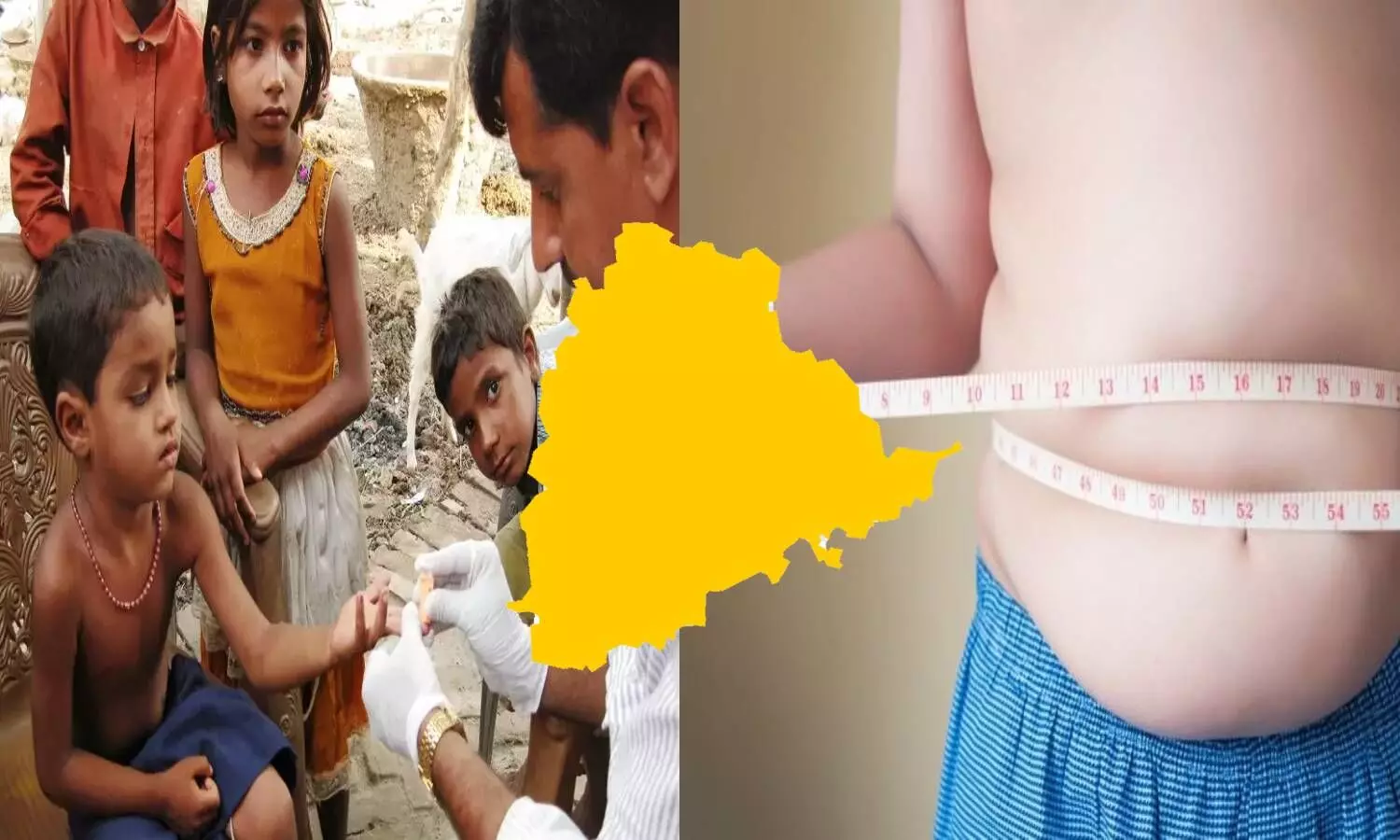Health Survey: Anemia, obesity on the rise, neonatal mortality rate drops in Telangana
Seventy per cent children in Telangana between the ages six-59 months are anaemic, according to the 5th National Family Health Survey (NFHS) 2019-20. This is an increase from the 2015-16 NFHS survey's figure of around 59.7 per cent.
By Sumit Jha
Hyderabad: Seventy per cent children in Telangana between the ages six-59 months are anaemic, according to the 5th National Family Health Survey (NFHS) 2019-20. This is an increase from the 2015-16 NFHS survey's figure of around 59.7 per cent.
The Union health minister, Dr Harsh Vardhan, released the 5th National Family Health Survey report on 12 December. It contains comprehensive information on population and health and nutrition in 17 states and five Union territories
According to the survey, 64.7 per cent of the girls between the ages 15-19 years are anaemic in the state, an increase of five per cent from the 2015-16 figure of 59.7 per cent. Similarly, 57.8 per cent of non-pregnant women between the ages 15-49 years were found to be anaemic while 53.2 per cent of pregnant women in the age group of 15-49 years were anaemic.
The number of anaemic adolescent men in the age group of 15-19 years decreased by six per cent from 19.2 per cent in 2015-16 to 25.1 per cent. Meanwhile, the percentage of anaemic men in the age group of 15-49 years has remained the same in the last four years at 15.3 per cent.
Obesity and blood pressure
Around 32.3 per cent men in the age group of 15-49 years are either overweight or obese. This is an eight per cent increase from 24.2 per cent in 2015-16. Meanwhile, 30.1 per cent women in the age group of 15-49 years are either overweight or obese, an increase of around two per cent from 28.6 per cent in 2015-16.
The ministry of health has included two new categories in the 2019-20 survey - high blood pressure and high sugar level.
The NFHS also found that around 31.4 per cent men above 15 years either have high blood pressure or are taking medicine to control their blood pressure, while 26.1 per cent of women in the state have high blood pressure or are taking medicine to control blood pressure. Also, around 18.1 per cent men and 14.7 per cent women have high blood sugar levels.
Institutional delivery
Telangana has improved in several indices. Institutional births in hospitals have jumped from 91.5 per cent in 2015-16 to 97 per cent in 2019-20. Also, institutional births in public facilities increased by around 19 per cent from 30.5 per cent in 2015-16 to 49.7 per cent.
Cesarean births also saw an increase in 2019-20 from 57.7 per cent in 2015-16 to 60.7 per cent. Around 81.5 per cent of deliveries in private facilities are by cesarean section, an increase of seven per cent from 74.5 per cent in 2015-16, which in public facilities caesarean births was 44.5 per cent in 2019-20 as compared to 40.3 per cent in 2015-16.
Also, an average out-of-pocket expenditure per delivery in a public health facility decreased to Rs. 3,846 in 2019-20 from Rs. 4,218 in 2015-16.
Mortality rate
The neonatal mortality rate per 1,000 live births has come down to 16.8 per cent from 20 per cent in 2015-16. The drop in the Anaemiainfant mortality rate was marginal- from 27.7 per cent to 26.4 per cent. Also, the under-5 mortality rate has come down to 29.4 per cent from 31.5 per cent in 2015-16.
Family planning
Telangana saw an increase in family planning from 57.2 per cent in 2015-16 to 68.1 per cent in 2019-20 though female sterilisation is still the main method for family planning. Around 61.9 per cent women opted for sterilisation in 2019-20, an increase by around eight per cent from 54.2 per cent in 2015-16. The male sterilisation rate saw a change of only 0.4 per cent from 1.6 per cent in 2015-16 to two per cent in 2019-20.
The use of pills, IUD, condoms, or injectables are below one per cent in the state.
Apart from health Indices, the living conditions have also changed in the state. Around 76.2 per cent of the population were using improved sanitation facilities in 2019-20 which is an increase of around 24 per cent from 2015-16.
There was also a jump of 11.6 per cent in child vaccination in the state from 67.5 per cent in 2015-16 to 79.1 per cent in 2019-20.
The sex ratio of the total population (females per 1,000 males) in the state has increased to 1,049 from 1,007.
The NFHS surveyed 6.1 lakh households and conducted household interviews to collect information on population, health, family planning, and nutrition-related indicators. NFHS-5 fieldwork for Telangana was conducted from 30 June 2019 to 14 November 2019 by Karvy Data Management Services Limited. Information was gathered from 27,351 households, 27,518 women, and 3,863 men.